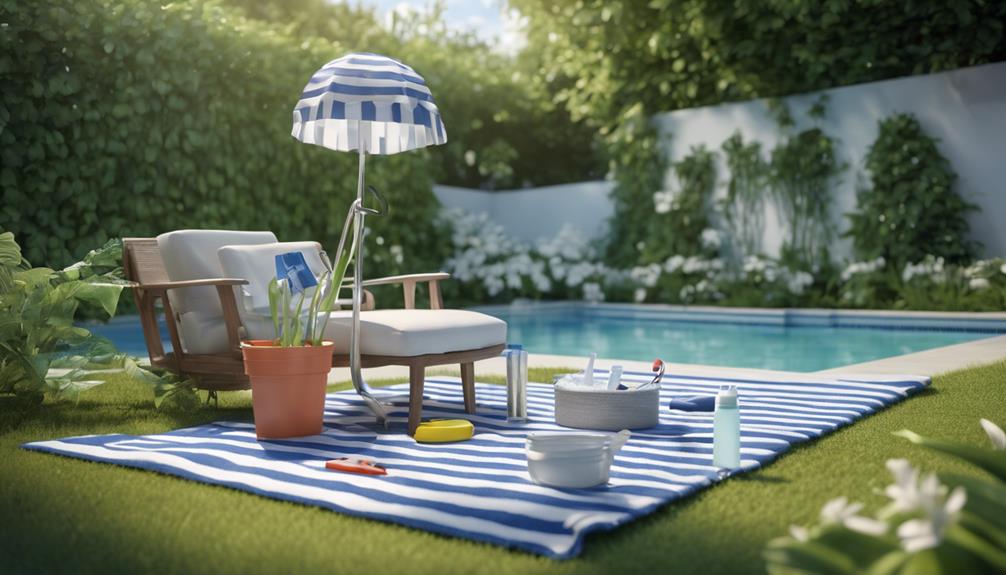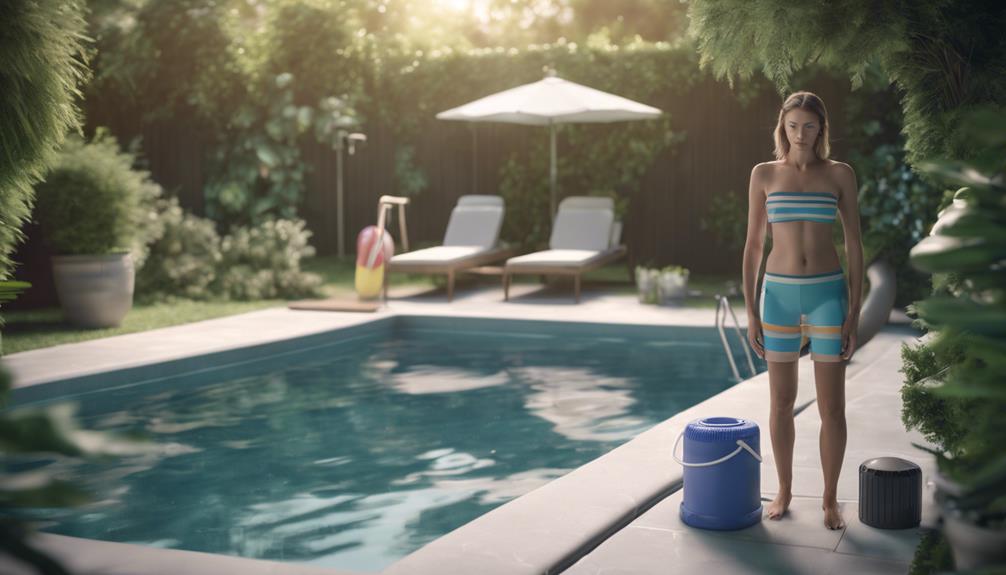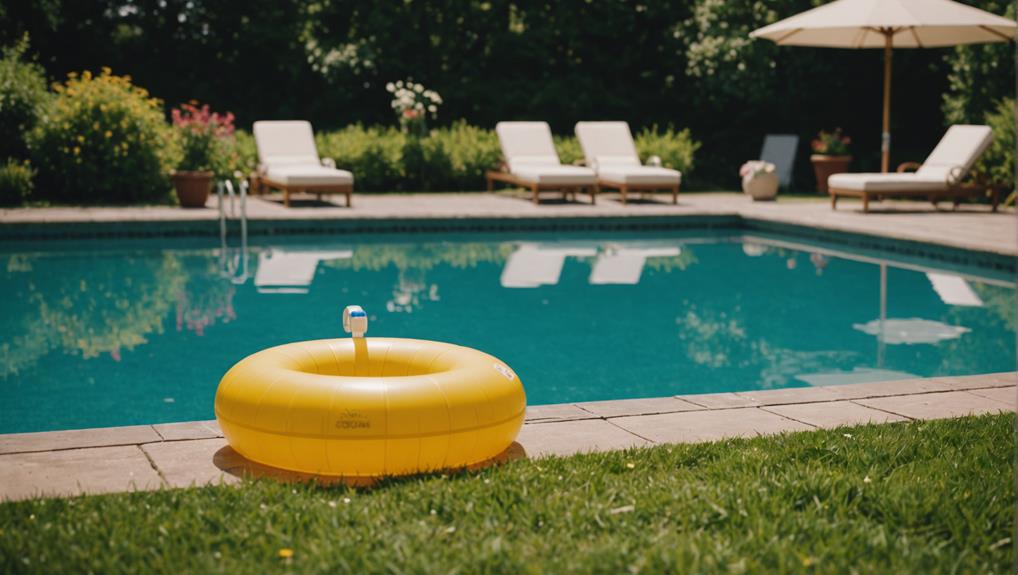You can substantially reduce your pool maintenance costs by implementing a few simple strategies. Start by adopting a proactive approach to identify and address minor issues before they escalate into costly problems. Regularly skimming the surface and vacuuming the pool floor can also prevent equipment failure and prolong its lifespan. Additionally, performing routine tasks like cleaning the filter and lubricating moving parts can extend the life of your equipment. By implementing a customized maintenance schedule and tracking tasks, you can identify potential issues before they become major problems. By taking these steps, you'll be well on your way to affordable pool maintenance – and there's more to explore to optimize your pool's performance.
Key Takeaways
- Adopt a proactive approach to pool maintenance to identify and address minor issues before they become costly problems.
- Perform regular maintenance tasks, such as skimming and vacuuming, to prevent equipment failure and prolong its lifespan.
- Implement a customized maintenance schedule to identify potential issues before they become major problems and track tasks to stay on top of maintenance.
- Upgrade to energy-efficient equipment, such as variable speed pumps and LED lights, to reduce energy consumption and lower utility bills.
Budget-Friendly Pool Maintenance
By adopting a proactive approach to pool maintenance, you can substantially reduce your expenses by identifying and addressing minor issues before they escalate into costly problems.
Regular pool maintenance tasks, such as skimming the surface, vacuuming the pool floor, and testing water chemistry, can be performed daily or weekly to prevent equipment failure and prolong its lifespan.
This proactive approach to pool care will save you money in the long run by preventing costly repairs and replacements. Additionally, performing routine maintenance tasks, such as cleaning the pool filter and lubricating moving parts, can also help extend the life of your equipment.
By taking care of your pool regularly, you'll avoid unexpected expenses and guarantee your pool remains safe and functional.
By implementing a customized maintenance schedule and tracking maintenance tasks, you'll be able to identify potential issues before they become major problems, further reducing the need for costly repairs and replacements.
With a little effort, you can enjoy a well-maintained pool while saving money on pool maintenance.
Energy-Efficient Pool Operations
Operating your pool efficiently not only reduces your environmental footprint but also substantially slashes your energy bills, and with a few strategic upgrades and tweaks, you can optimize your pool's energy consumption.
One effective way to do this is by installing a variable speed pool pump, which can reduce energy consumption and save you up to $1,500 per year in utility bills.
Additionally, using a pool timer to optimize pump operation can help reduce energy consumption and prolong the lifespan of the pump.
Another energy-efficient upgrade is replacing traditional incandescent light bulbs with modern LED lights, which use 80% less energy.
Moreover, upgrading to an energy-efficient pool heater can help reduce energy consumption and lower utility bills, with some models offering up to 95% efficiency.
Finally, consider using a solar pool cover to reduce heat loss and conserve energy by capturing the sun's energy and retaining pool heat.
DIY Pool Cleaning Essentials

To maintain a sparkling clean pool, you'll need a few essential DIY cleaning tools in your arsenal, including a sturdy skimmer net, a pool vacuum, and a reliable test kit to monitor water chemistry.
These tools will help you remove debris, dirt, and algae from the pool surface and floor, ensuring your pool water remains clean and clear.
When choosing a skimmer net, opt for one with a heavy-duty frame and a durable net bag that can withstand frequent use.
A pool vacuum is also vital for removing dirt and debris from the pool floor. Look for a vacuum with adjustable suction control and a long hose for easy maneuverability.
Regularly cleaning your pool will prevent the buildup of dirt and algae, reducing the need for harsh chemicals and saving you money in the long run.
By incorporating these DIY cleaning tools into your pool maintenance routine, you'll be able to keep your pool clean, clear, and safe for swimmers.
Regular Pool Water Testing
You'll need to test your pool water regularly to guarantee the chemical levels are within the recommended ranges, as even slight imbalances can lead to cloudy water, equipment damage, or swimmer discomfort. To certify your pool water is safe and healthy, you should test it at least once a week. You can use test strips or send a water sample to a lab for more detailed analysis.
Parameter | Recommended Range |
| — | — |
|---|---|
| pH | 7.2 – 7.8 |
| Alkalinity | 80 – 120 ppm |
| Calcium Hardness | 200 – 400 ppm |
| Chlorine | 1 – 3 ppm |
Regular testing allows you to identify and address any imbalances in your pool water chemistry before they cause problems. By keeping your pool water within the recommended ranges, you'll prevent damage to your equipment, reduce eye irritation, and certify a safe and enjoyable swimming experience. Remember, regular testing is key to maintaining a healthy and balanced pool.
Cost-Effective Pool Equipment Upkeep

By incorporating routine maintenance into your pool care routine, you can substantially extend the lifespan of your equipment, reduce energy consumption, and avoid costly repairs down the line.
Make it a habit to clean your filter once a week to increase filtration, keep your pool water clean, and save money on maintenance.
Regularly inspect and replace worn-out or damaged parts of your pool equipment to prevent equipment failure, reduce downtime, and save money on repairs.
Don't forget to lubricate your pool valves annually to prevent corrosion and guarantee smooth operation.
When it's time to replace your pump, consider upgrading to an energy-efficient variable speed pump, which can markedly reduce energy consumption and lower your utility bills.
On average, pool pumps should be replaced every 8-10 years to guarantee efficient and cost-effective operation.
Frequently Asked Questions
How Much Do People Spend on Pool Maintenance?
You'll find that as a pool owner, you'll need to allocate a significant maintenance budget, with average annual costs ranging from $1,000 to $5,000, depending on seasonal costs and the complexity of your pool system.
Is It Cheaper to Take Care of Your Own Pool?
You'll save money by taking care of your own pool, enjoying DIY savings of up to $1,000 per year; buying pool chemicals in bulk reduces costs by 50%, and adding a personal touch to maintenance guarantees a sparkling clean pool.
How Can I Reduce the Cost of My Pool?
"Can you really afford not to optimize your pool's efficiency? By regularly testing your pool's water, monitoring chemical levels, and cleaning your filter, you can cut costs and enjoy a sparkling clean pool all season long."
How Do I Make My Pool Low Maintenance?
To make your pool low maintenance, you'll want to invest in a pool cover to reduce debris and evaporation, consider automated systems for efficient cleaning, and think about switching to a saltwater system for fewer chemical concerns.
Conclusion
By following these 5 tips, you'll be swimming in savings in no time!
Affordable pool maintenance is within reach, and with these cost-cutting strategies, you'll be traversing the waters of pool ownership with ease.
Remember, maintaining your pool is like tending to a garden – with regular care and attention, it will bloom into a beautiful oasis, but neglect it and it'll wither away.
Stay on top of your pool's needs and reap the rewards of a sparkling clean and budget-friendly backyard retreat.

I’m Max, the founder and chief pool enthusiast behind Pool Pro Tips. As a passionate pool owner and cleaning expert, I created this website to share my knowledge and experience with you, helping you to keep your pool sparkling clean and safe for years to come.

